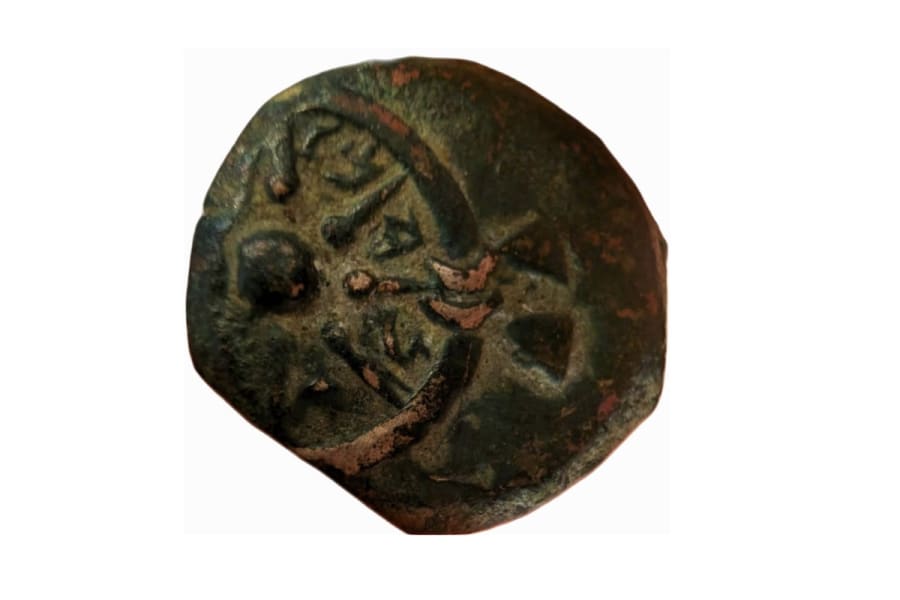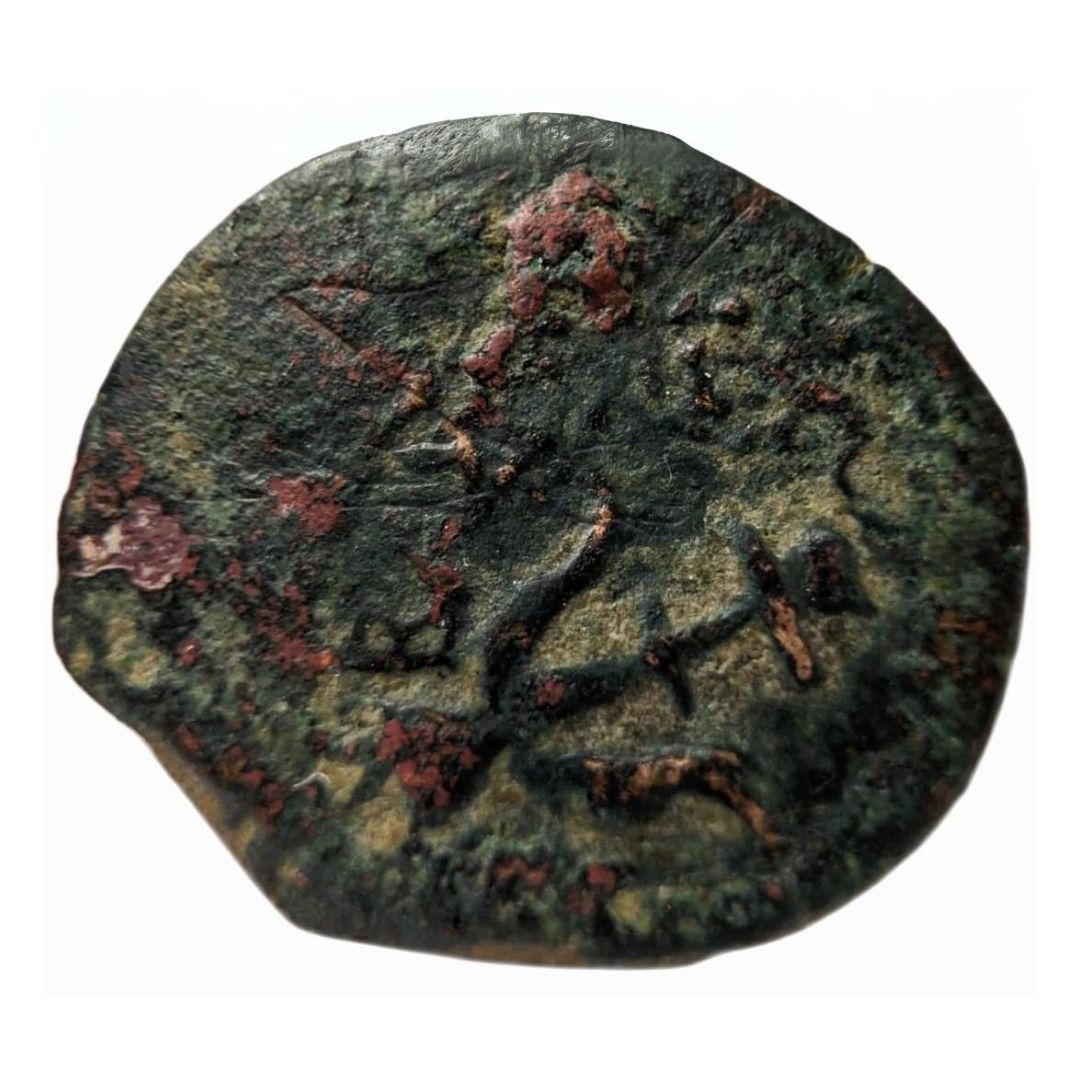A 2,000-year-old 'widow's mite' coin found by 11-year-old boy near Dead Sea
The coin was minted during the zenith of Hasmonean power

A young Israeli boy recently discovered a coin over 2,000 years old near his hotel in the Dead Sea area, the Israeli Antiquities Authority announced.
The tiny bronze coin was minted under the Hasmonean King and high priest Alexander Jannaeus during the 1st century B.C.
Nati Tokiar is an enthusiastic 11-year-old child who was evacuated with his family from their home on Kibbutz Magen after the Oct. 7 massacres that led thousands of Israelis living in border communities to be quickly relocated to a safer place.
During one of his trips to the Dead Sea area, where his family is living in a hotel, he was surprised to find an ancient coin on the ground. Nati demonstrated outstanding citizenship by returning it to the Israeli Antiquities Authority (IAA).
Nati’s father shared that sometimes when the kids finish their school day, they go for a quick walk near the hotel.
"Nati is a curious child who enjoys exploring his surroundings and discovering interesting objects. After a short hike, he returned to me with excitement, proudly announcing that he had found a tiny coin. Together, we conducted some research about the coin online, and Nati suggested reaching out to the Antiquities Authority to report his discovery."
"The response we received was exceptional, and it was heartening to see archaeologist Alex Freiberg make the effort to come and meet Nati in person, presenting him with a certificate. This experience has filled Nati with joy and motivation, inspiring him to continue practicing good citizenship in the future."

Dr. Robert Kool, who heads the coin division at the Antiquities Authority, said that the coin unearthed by Nati is a renowned currency attributed to the Hasmonean king Alexander Jannaeus, who ruled over Judea in 104–76 B.C.
Adorning the coin's surface is an anchor, encircled by a Greek inscription - "Alexandro Basilous," denoting "(of) Alexander the King." The reverse side features an 8-pointed star, encased within a crown. Between the star's points lies a script, partly decipherable, detailing the king's name and title in ancient Hebrew: "[John]n /e /mal / [ch]."

Under the reign of Alexander Jannaeus, the Hasmonean dominion reached its zenith in both power and territorial expansion over Judea. As a significant figure blending Jewish heritage with Hellenistic influence, he bore the dual mantle of high priest and king, as evidenced by the coin's inscription.
During the 80s B.C., these coins were minted in abundance, circulating extensively within Israel and neighboring lands, indicative of Jannaeus' expansive rule.
"The proliferation of these coins along the Dead Sea coastline," explains Dr. Kool, "serves as a testament to the military campaigns and conquests waged against the Kingdom of Nabataea across the Jordan River. They facilitated payment to the king's soldiers, fortified strategic outposts such as Masada, Machaerus, and Qumran, and contributed to the establishment of a naval fleet operating in the Dead Sea. Hence, the presence of the anchor symbol on the coin may well derive from this maritime activity."
The coin is, indeed, found in abundance in the archaeological Second Temple period sites of Israel, and according to numismatic experts, these small bronze coins, sometimes called “Pruta” or “Lepton,” were used for small payments.
A large hoard of these coins was discovered near Nati’s hotel in the past, specifically at a Hasmonean-Herodian port of the Dead Sea called “Hurvat-Mazin.”
Rome and other Hellenistic kingdoms around that time forbid Judean kings to mint silver and gold currencies, only bronze. However, these small bronze coins would become a strong tool for the Judean king's propaganda, showing off their attributes and names. The images of the anchor and star were reused from the Hellenistic king's symbolic repertoire.
This specific coin type is named “the widow mite” by some scholars, antiquities sellers and experts, as it was most probably the coin mentioned in the Gospels of Mark 12:41–44 and Luke 21:1–4.
Scholars and archaeologists in Israel are aware that these coins were used and minted repeatedly in other variants after Jannaeus' reign, even until Jesus’ time. This coin became a brand-name small copper coin for daily use at the market.
Since Oct. 7, the guides at the educational center of the IAA have been conducting daily demonstration sessions in numerous hotels accommodating internal refugees across Israel.
These sessions offer participants a brief respite from the challenging reality they face, while also introducing them to the fascinating world of antiquity.
The IAA engages with residents of Kibbutz Magen as part of a comprehensive series of initiatives aimed at supporting refugees in the Dead Sea region, and it's gratifying to see that the younger generation is already familiar with the educational work and recognizes the significance of ancient civilizations.

The All Israel News Staff is a team of journalists in Israel.













